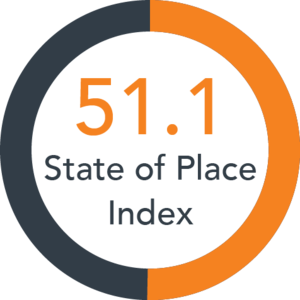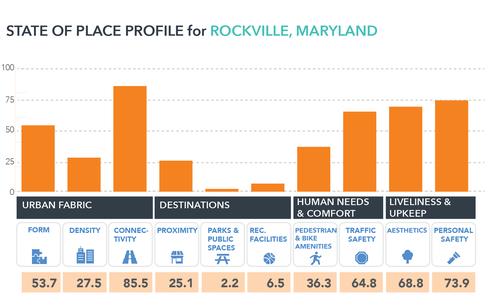How Cities & Investors Can Measure the Impact of Redevelopment Projects
For the past few years, our team has been working with Conservation Law Foundation (CLF) to review and rate real estate development projects for the Healthy Neighborhoods Equity Fund (HNEF), a pioneering $22M private equity fund created in partnership with the Massachusetts Housing Investment Corporation (MHIC). HNEF invests in Transit-Oriented Development (TOD) projects in struggling neighborhoods with below-average health outcomes that have strong community support and potential for growth. As part of its investment review process, HNEF takes a holistic approach to measuring the environmental, social and health benefits of the proposed project as well as financial returns. One of the challenges to this approach is measuring all of the myriad factors that influence the neighborhood environment (290 to be exact!) and the way these features interact with each other. That’s why CLF turned to State of Place.
Our Algorithm is the Key
State of Place is the only tool that measures the change in walkability of a neighborhood as the result of a proposed development project. This gives you the unique ability to rate and compare projects across different locations. We do this by collecting data on 290+ built environment features, such as density, land use, street trees, sidewalks, and benches, collected at the block level, and then we aggregate that into the State of Place Index, a score from 0 to 100. The State of Place Index indicates how walkable - convenient, safe, dynamic and livable - a block, group of blocks, or neighborhood is. Working with the team at CLF, we look at how this compares to the projected State of Place Index after the project is complete to understand how much of a difference it will make. Projects that show a significant improvement over existing conditions receive a higher impact rating, and are more likely to receive an investment from the fund.
Using State of Place allows CLF and HNEF fund managers to evaluate and compare neighborhoods based on micro-scale as well as macro-scale environmental features before and after development projects are built. CLF is also using State of Place as part of a Participatory Action Research project to better understand the health impacts of mixed-income, mixed-use TOD projects on neighborhood residents.
CLF’s Implementation of State of Place
Eastern Massachusetts (image via Google Maps)
To date, HNEF has invested in six projects in Eastern Massachusetts. Together, these projects are creating nearly a million square feet of new development near transit, including 528 units of mixed-income housing and 106,000 square feet of commercial and retail space. Using the State of Place Index, CLF was able to show investors that these projects will increase walkability at the block level by as much as 80 percent, and at the neighborhood level (for all blocks within a ¼ mile radius) by as much as 10 percent. As part of the investment monitoring and reporting process, CLF will also conduct a follow-up State of Place analysis five years and ten years after construction to see how conditions have changed. This will provide valuable insight about how overall changes in the physical environment relate to other key factors at the neighborhood level, including property values, crime rates, transit use, and health outcomes, among others.
We’re so honored to be a part of this project and hope more cities and real estate investors will follow so they too can benefit from the data-driven approach that we provide to building happy and healthy cities.
If you'd like to see how State of Place can measure the impact of your redevelopment project, please book a time to chat with us! We'd love to discuss your project.














